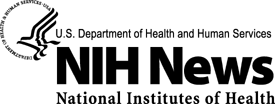| Life-saving Information on Stroke Easily Accessible at NIHSeniorHealth
Each year, more than 700,000 strokes occur in the United States, nearly three-quarters
of them in people over age 65. Because the risk of stroke more than doubles each
decade after age 55, it is especially important for older Americans to know stroke’s
warning signs and act quickly. Now, information on how to reduce risks of stroke,
recognize symptoms, and treat stroke’s damage is available at www.nihseniorhealth.gov.
The NIHSeniorHealth Web site is a joint effort of the National Institute on Aging
(NIA) and the National Library of Medicine (NLM), which are part of the National
Institutes of Health (NIH).
“Stroke is an unmistakable event. Few other medical conditions come on so suddenly
or are so noticeable to a bystander,” says John R. Marler, M.D., associate director
for clinical trials at the National Institute of Neurological Disorders and Stroke
(NINDS), which developed the content for the stroke topic on the NIHSeniorHealth
Web site. Because stroke injures the brain, the person having a stroke may not
realize what is happening. But to a bystander the signs of stroke are distinct
and sudden:
- Numbness or weakness of the face, arm, or leg (especially on one side of
the body);
- Confusion, trouble speaking or understanding;
- Trouble seeing in one or both eyes;
- Trouble walking, dizziness or loss of balance or coordination;
- Severe headache with no known cause.
In treating a stroke, every minute counts. New treatments are available that
greatly reduce the damage caused by a stroke, but they must be delivered quickly
after symptoms begin. Knowing the symptoms, calling 911 immediately, and getting
to a hospital are critical to preventing long-term disability.
One of the fastest growing age groups using the Internet, older Americans increasingly
turn to the World Wide Web for health information. In fact, 66 percent of “wired” seniors
surf for health and medical information when they go online. NIHSeniorHealth,
which was designed especially with seniors in mind, is based on the latest research
on cognition and aging. It features short, easy-to-read segments of information
that can be accessed in a variety of formats, including various large-print type
sizes, open-captioned videos, and an audio version. Additional topics coming
soon to the site include osteoporosis and heart disease. The site links to MedlinePlus,
NLM’s premier, more detailed site for consumer health information.
The NIA leads the Federal effort supporting and conducting research on aging
and the health and well-being of older people. The NLM, the world's largest
library of the health sciences, creates and sponsors Web-based health information
resources for the public and professionals. The NINDS supports biomedical research
on the brain and nervous system and on the causes, treatment, and prevention
of stroke. All three are components of the National Institutes of Health in
Bethesda, Maryland, part of the U.S. Department of Health and Human Services.
The National Institutes of Health (NIH) — The Nation's Medical Research
Agency — includes 27 Institutes and Centers and is a component of
the U. S. Department of Health and Human Services. It is the primary Federal
agency for conducting and supporting basic, clinical, and translational medical
research, and investigates the causes, treatments, and cures for both common
and rare diseases. For more information about NIH and its programs, visit http://www.nih.gov. |

